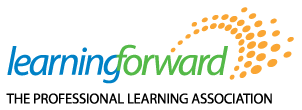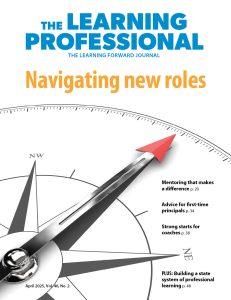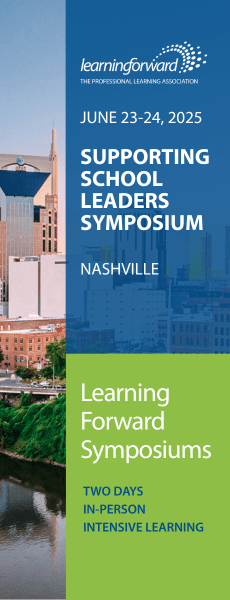Leadership
The Learning Forward team had a very successful weekend in Toronto with our Academy cohorts, affiliates, institutes, and board meetings. Our Academy 2017 cohort got off to a great start, and many of the Academy 2016 members shared with us how much their learning is starting to gel. The affiliate leaders appreciated the choices of learning opportunities they had throughout the weekend, and several institute participants shared with me that the learning they experienced was both timely and impactful.
Time after time, conversations with decision makers in successful organizations reveal the high value they place on the relationships they try to build among people. The focus on relationships is not to be taken lightly. Toxic relationships diminish capacity (Lewin and Regine, The Soul at Work, 1999). With multiple, increasingly complex initiatives, leaders in successful organizations generate their best work and results from the interactions they have with the people who work there. To create new solutions for challenging problems, they have to have these relationships to enlist the ability and creativity of the people in their schools.
Followers of the Learning Forward blog know that we changed our name several years ago from the National Staff Development Council to Learning Forward. Later this year, we’ll reach the five-year anniversary of the new name. As I reflect on those years, I think about some of the learning I’ve seen in schools and districts that leads me to ask, “Are you learning forward or backward?”
When I was a local school board member, parents frequently asked for my advice on how to ensure their child got a particular teacher in a school. I knew how the game would be played after I reminded them this wasn’t the role of the school board: They would write the principal with their requests for the next year. The principal would respond to assure the parents that no matter which classroom their child was assigned, he or she would have a great year.
As a consultant and coach, I do a lot of my best thinking in the car or on the plane. I found myself doing just that a week ago, when I tuned into National Public Radio’s morning show. The moderator mentioned that playwrights often use a technique to hook their audiences. Simply put, they draw people into their plays by breaking a ritual or custom and letting the characters wrestle with the conflict that it produces. In the world of theater, this creates the “edge” that forms memories from the play or musical. Thus, in the theater, breaking the ritual is a good thing and it produces the intended result . . . drama and memories.
Windshields are larger than rearview mirrors so that we may focus on the road ahead while occasionally looking behind for perspective and course corrections. My resolution for 2015 is to learn more about six topics that will help us make sense of the continuously shifting educational landscape so that we can focus on next steps for student success.




